Albania Travel
Albania is a small and charming country nestled in the Balkan Peninsula. It is often overlooked by travellers searching for their next European adventure. However, this captivating destination boasts a wealth of natural beauty, history, and culture just waiting to be discovered. Albania has some of the most stunning scenery in all of Europe. In the South of Albania: you can discover beaches that rival the Maldives and any Mediterranean island. And in the North, you can explore mountains and alpine ranges which could make Switzerland envious. If you’re curious about whether Albania is worth visiting, let me share five reasons why you should absolutely add this enchanting country to your travel wishlist.
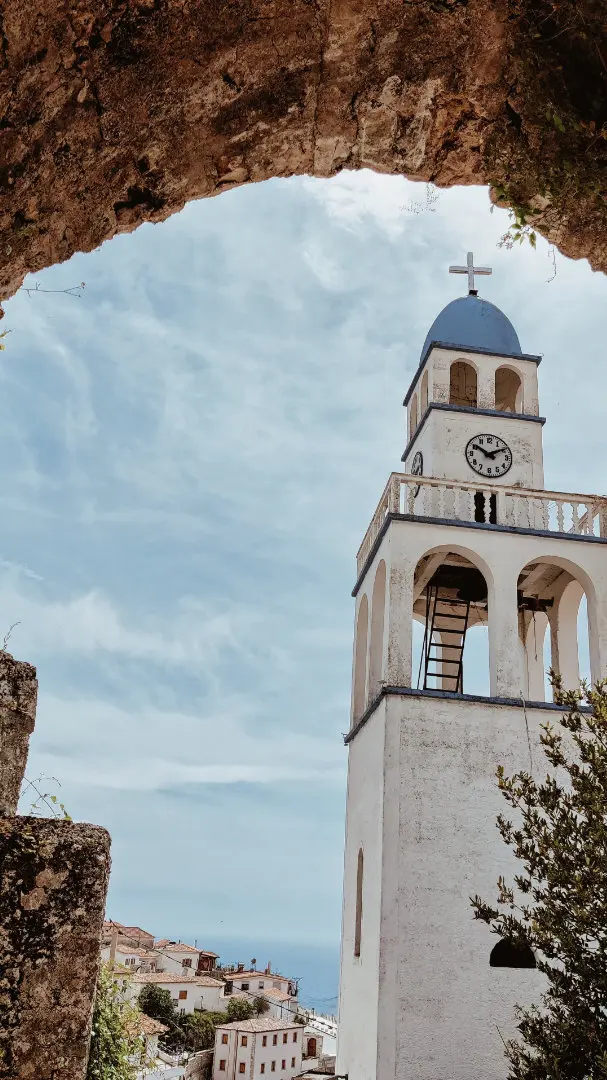
Dhërmi

Little church in Theth
Table of Contents
Albania
Albania is a country located in Southeastern Europe on the Balkan Peninsula. It is bordered by Montenegro to the northwest, Kosovo to the northeast, North Macedonia to the east, Greece to the south and the Adriatic and Ionian Seas to the west. The country has a rich and complex history, which has been shaped by various empires, movements and cultures, including the Greeks, Romans, Ottomans, and in the modern era the communist regime. Today, Albania is a parliamentary democracy. It is known for its stunning natural scenery, beautiful beaches, and unique cultural heritage, authentic Albanian cuisine and friendly locals.
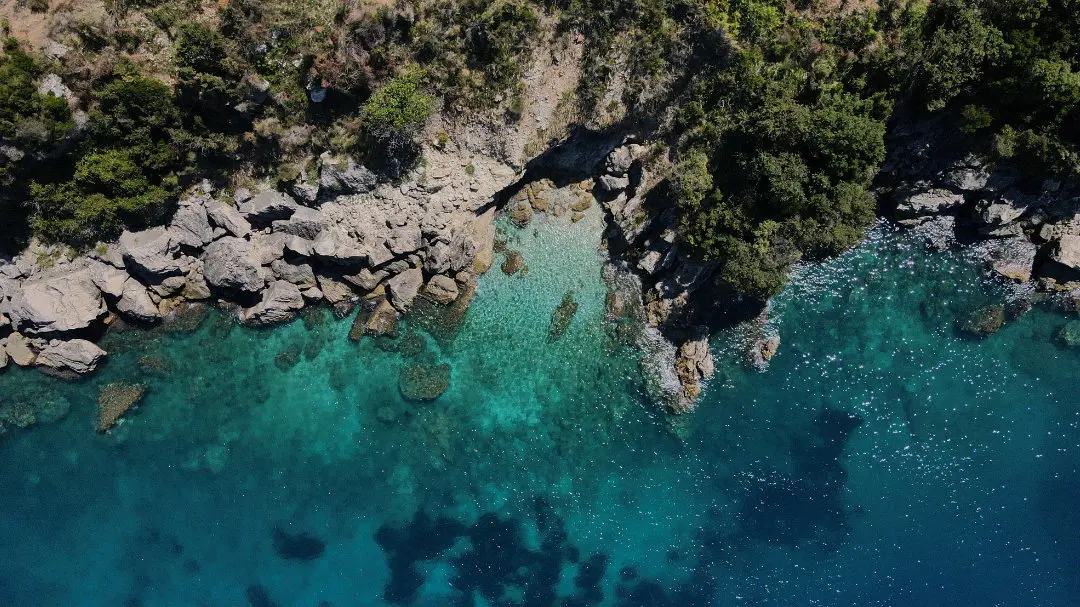
Beautiful Albanian Coastline

Korçë
How to get to Albania
Getting to Albania is relatively easy, with various options available depending on your location and preferences. When planning your trip to Albania, consider your preferences, budget, and time constraints. Whichever mode of transportation you choose, make sure to have all necessary travel documents, such as a valid passport and any required visas, in order before embarking on your journey.
Here are the most common ways to reach Albania:
By Air:
The most convenient way to get to Albania is by flying into Tirana International Airport Nënë Tereza (TIA), the country’s primary international airport. Numerous airlines operate flights to and from major European cities, including low-cost carriers like Wizz Air and Ryanair.
By Land:
By Bus: International bus services like FlixBus connect Albania with neighbouring countries such as Greece, North Macedonia, Montenegro, and Kosovo. Buses are generally comfortable and affordable, although journey times can be long due to border crossings and varying road conditions.
By Car: If you prefer the flexibility of a road trip, you can rent a car in Albania or drive to Albania from neighbouring countries. The latter might be harder, as not all rental companies allow cross-border travel. Be sure to familiarize yourself with local traffic regulations, road conditions, and required documentation (e.g., international driving permit, vehicle registration, and insurance) before embarking on your journey. The best car rental companies in Europe which operate in Albania are Avis and Europcar. Last time I checked Avis allowed cross-border travel.
By Sea:
Ferries operate between Albania and Italy, connecting the Albanian ports of Durrës and Vlorë with several Italian ports, such as Bari, Brindisi, and Ancona. Ferry services vary in comfort and price, with options ranging from standard seating to private cabins. The journey can take anywhere from 8 to 15 hours, depending on the route and service. Check out Isferry providers for route maps, schedules and prices. There are three ferry routes: from Durres to Bari, which is the most popular choice for those who want to visit Italy as Durres port is located in a distance of 35 km east of Tirana. There is the Vlora to Brindisi Ferry: which has 3 to 5 ferries per week. And the Saranda to Brindisi Ferry: 1 weekly ferry departs from the Mediterranean port of Saranda.
Why Albania is worth visiting
Albania is an off-the-beaten-path destination that offers a truly unique and authentic travel experience. The friendly people and excellent value for money make it a fantastic travel destination. Whether you’re looking to explore its rich history and culture, enjoy its stunning natural scenery, or relax on its beautiful beaches, Albania has something for everyone.

Benje Hotsprings
01 – Beautiful Beaches & Coastline
Albania is also home to some of the most beautiful beaches in Europe. This is no exaggeration! The beaches in Albania are stunning! The country’s coastline is more than 470 km long, with crystal clear waters, golden sands, and hidden coves. With Albania slowly becoming a much-loved tourist destination and growing in popularity, I can see the Albanian Riviera and beaches holidays exploding as the must-visit destination in the next few years. Some of the best beaches in Albania include Saranda, Dhermi, and Jale. Visitors can also explore the charming coastal towns and villages, which offer a glimpse into Albanian life by the sea.

Bora Bora Beach Ksamil
02 – Affordable Prices
Compared to many other European countries, and their neighbours. Albania is quite affordable. Visitors can enjoy a high-quality travel experience at a fraction of the cost of other popular destinations. Accommodation, attractions, food, and transportation are all very reasonably priced, which makes Albania an excellent choice for budget-conscious travellers. From experience of travelling around Albania for two weeks, I can honestly say, you would be quite hard-pressed to spend your money here. There are many styles of resorts and hotels to suit all budgets and needs from luxury to backpacking. According to budgetyourtrip:
“Based on thorough data from 282 hotels, the average hotel price in Albania is a very reasonable $49|£39|€45. The average price of the 41 top luxury hotels in Albania is $81|£65|€74, pretty good right! The average hotel cost for one week in Albania is surprisingly affordable at $342|€315|£277 (not including taxes and fees).” These are pretty great prices, right?! (all prices exchange against current rates on currencyXE)
Check the table below for other average prices:
Average prices
- 3 Course Meal for 2 Mid Range restaurant €28.26
- Cappuccio at a cafe €1.27
- Domestic Beer 1/2 litre €1.78
- Tourist Attraction €5
- Economy Car Rental per day €15
- Tourist Bus example from Durres to Tirana €8
*Prices are taken from the great resource Numbeo.

Unesco town of Gjirokastër
03 – Breathtaking Nature
One of the main reasons to visit Albania is its stunning natural beauty. Albania is home to some of the best hiking trails in Europe! The landscape is abundant with a variety of different natural wonders: From the heights of the Albanian mountain alps to the blue eye spring natural wonder, Albania is a nature lover’s ultimate destination. The country is home to several beautiful national parks:
Theth National Park:
Located in the Albanian Alps, Theth National Park is famous for its dramatic mountain scenery, traditional stone houses, and picturesque valleys. Visitors can enjoy hiking, mountain biking, and horseback riding, as well as exploring the park’s beautiful waterfalls, such as the Grunas Waterfall.
Valbona Valley National Park:
Another gem in the Albanian Alps, Valbona Valley National Park features rugged mountain landscapes, crystal-clear rivers, and dense forests. The park is popular for trekking and offers several trails, including the challenging but rewarding hike between Valbona and Theth.
Llogara National Park:
Situated along the Albanian Riviera, Llogara National Park is known for its scenic coastal views, diverse flora and fauna, and unique geological formations. The park is ideal for hiking, paragliding, and birdwatching, and offers access to stunning beaches like Dhermi and Jale.
Butrint National Park:
A UNESCO World Heritage Site, Butrint National Park encompasses both historical and natural wonders. The park is home to the ancient city of Butrint, which features well-preserved ruins from various periods, including the Greek, Roman, Byzantine, and Venetian eras. The surrounding wetlands and forests are perfect for birdwatching and exploring local flora and fauna.
Dajti National Park:
Easily accessible from the capital city of Tirana, Dajti National Park offers a quick escape into nature. The park boasts diverse landscapes, ranging from dense forests to rocky mountain peaks. Hiking, picnicking, and enjoying panoramic views of Tirana from the Dajti Ekspres cable car are popular activities.
Prespa National Park:
Prespa National Park is situated around the Prespa Lakes, which are shared by Albania, Greece, and North Macedonia. The park’s wetlands and reed beds provide important habitats for numerous bird species, making it an excellent destination for birdwatching. Hiking and exploring the park’s traditional villages are also popular activities.
Divjaka-Karavasta National Park:
Divjaka-Karavasta National Park is centred around the Karavasta Lagoon, one of the largest lagoons in the Mediterranean. The park is home to a diverse array of bird species, including the endangered Dalmatian pelican. Visitors can enjoy birdwatching, walking along the sandy beaches, and exploring the pine forests.
These national parks offer a glimpse into Albania’s stunning natural beauty and provide ample opportunities for outdoor activities, wildlife spotting, and cultural exploration.
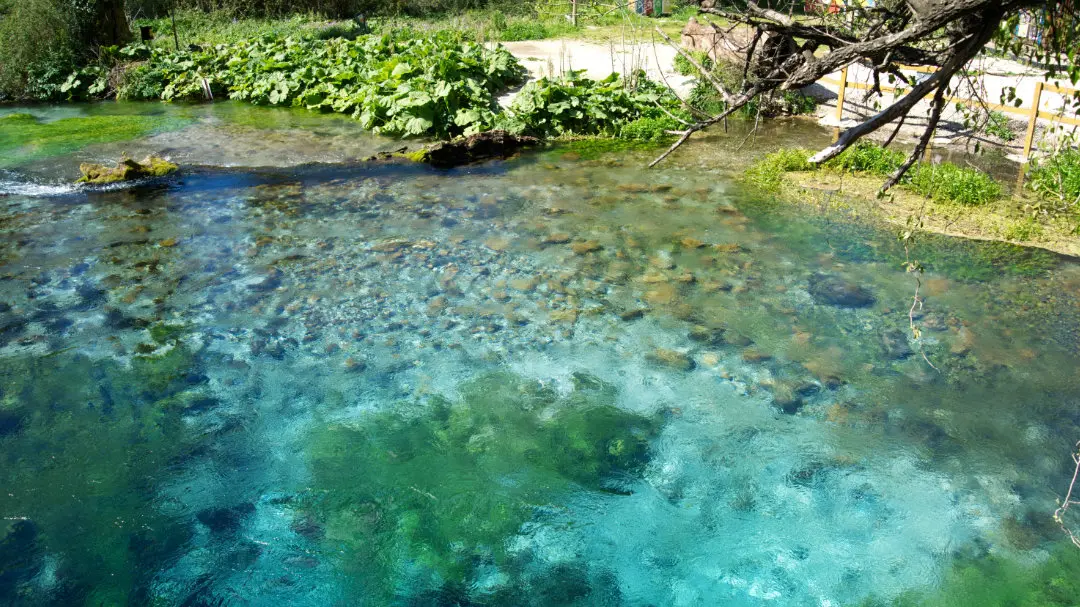
The Blue Eye
04 – Friendly & Welcoming Locals
Many travellers have found that Albanians are some of the most hospitable and welcoming people they have ever encountered and they wouldn’t be wrong. Albania is one of the friendliest countries we have ever visited. We were blown away by the level of warmth, hospitality and kindness we received from the locals. Albanians hold their cultural values in very high regard. They pride themselves on their warmth and generosity, which have been deeply ingrained in their society for generations. Friendliness is considered a virtue, and Albanians are taught from a young age to treat others with kindness and respect. if you are interested in more about this, have a read at this article by BBC Travel.
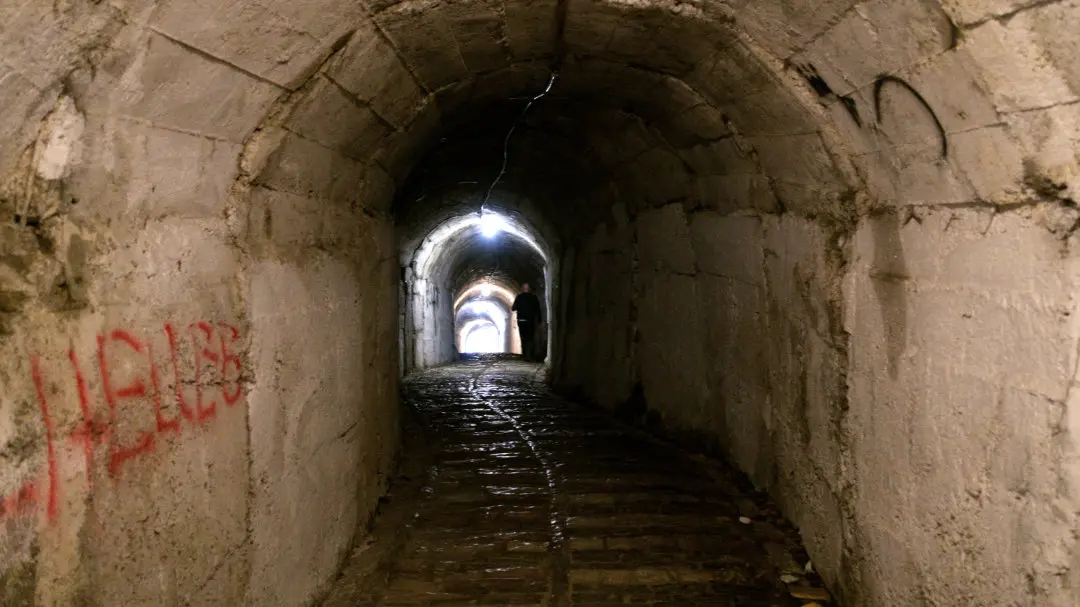
Tunnels in Gjirokastër
05 – Rich History & Culture
Albania has a long and interesting history, with influences from the Greeks, Romans, Ottomans, and Balkan history. Albania was an isolated Communist Country for around 40 years after World War 2. As a result, the country has a rich mixture of cultural heritage that is reflected in its art, architecture, nature and traditions. Visitors can explore ancient ruins, medieval castles, Ottoman-era bazaars, a well as gun bunkers and Communist-era monuments and relics of war. Albania is also known for its rich traditional music, dance, and cuisine, which are unique to the region.
There are four UNESCO world heritage sites in Albania and two on the UNESCOs intangible cultural heritage list. They are:
–Ancient & Primeval Beech Forests of the Carpathians & other Regions of Europe
-Butrint
-Historic Centres of Berat and Gjirokastra
-Natural and Cultural Heritage of the Ohrid region
The two inscribed on the intangible cultural heritage list are:
-Albanian Folk Iso-Polyphony
Traditional Albanian polyphonic music can be divided into two major stylistic groups as performed by the Ghegs of northern Albania and the Tosks and Labs living in the southern part of the country.
-Xhubleta, Skills, Craftsmanship and forms of usage.
Xhubleta is a handcrafted garment worn by highland women and girls in Northern Albania, characterised by its undulating bell form.
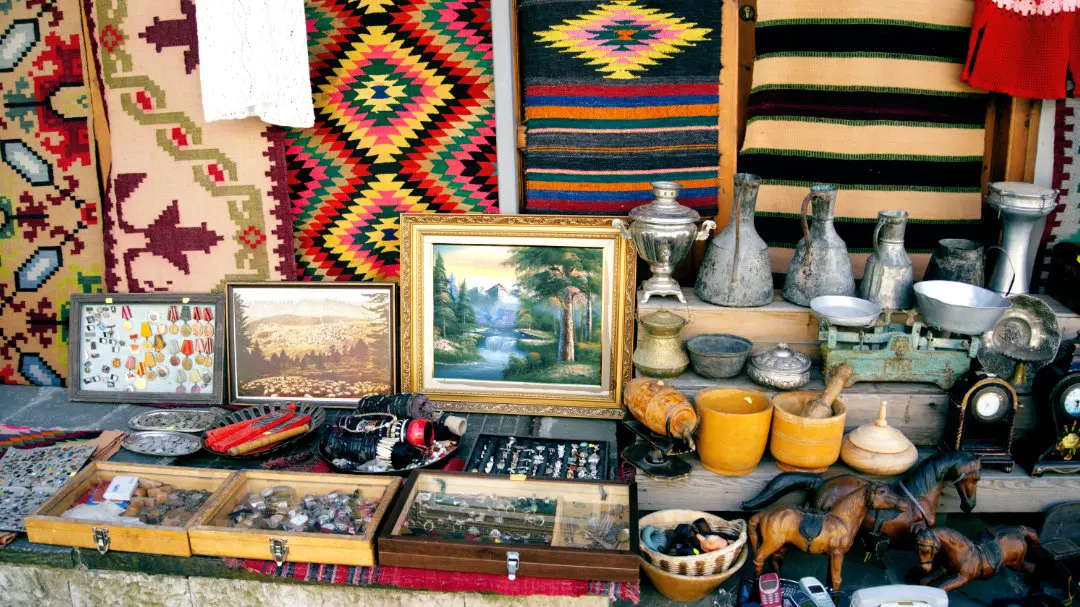
Authentic Markets in Albania
We hope you enjoyed reading as much as we enjoyed wirting, please feel free to sign up or leave a comment below if you enjoyed the read!